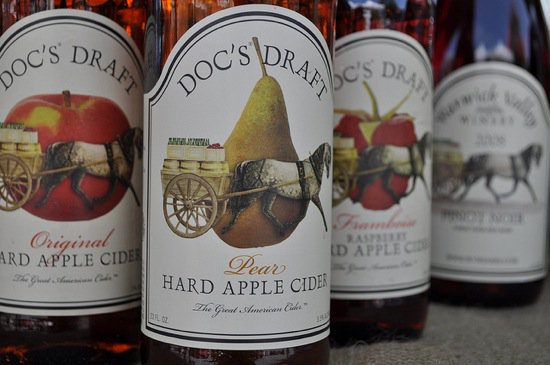Is Traditional Cider Making a Comeback?

Say the word “cider” in the United States, and most people will think of one of two things: the warm, mulled stuff you drink on an autumn weekend while pumpkin hunting, or an overly sweet, mediocre alternative to beer that very few people are tempted to order in a bar. But there’s another kind of cider, that besides the apples, doesn’t have much to do with the other two.
In the U.S., this cider is commonly referred to as “hard cider,” implying that it’s the alcoholic kind, but in much of the rest of the world it simply goes by “cider.”
Cider is old. There are references to it back to Roman times. And while in the last few decades in the American market it has been an often forgotten product, at one point in time, traditional hard cider was actually one of the most popular beverages. Cheaper to produce than beer or wine, it’s no surprise that the founding forefathers loved the stuff, and made with apples that could be grown in the backyard, what drink could be more local and patriotic?
In fact, up until the mid-19th century, if you said “cider” people assumed you meant the fermented apple juice. But times have changed, and nowadays if we reference cider in the alcoholic sense, we tend to think of industrial names like Hornsby’s which are often equated with sugary, commercial tastes.
But hard cider is making a comeback.
Just like their counterparts in the craft beer movement, artisan hard cider makers have found an excellent market niche, and small companies turning apples to a sparkling drink are popping up all over the country, from Washington to Virginia; and if you keep your eyes open you may see a few at your local farmers market. In Portland, you can even find an all-cider pub.
“This is a phenomenally funky, sour, even mildly smoky cider that has to be tasted to be believed,” Greg Engert, one of the owners of a bar in Washington called ChurchKey, told NPR in an interview on the subject.
He’s right. If you’re new to the artisanal hard cider market, be ready for a drink that’s bubbly but dynamic. Often it can feel more like you’re drinking a sparkling natural wine, and it also allows the use of heirloom varieties that might otherwise have gone forgotten.
The process of making cider is simple, and yet an art. Apples are harvested, ground to a pulp, then pressed into “must.” That must is then placed in fermentation barrels, and during the time that it sits (several months) natural wild yeasts convert the sugar to alcohol. A basic fermentation process that humans have been using for thousands of years, that if you have the right equipment, you can do at home.
Bubbles that are local and artisan? You can’t go wrong.
Related on Organic Authority
How to Use Apple Cider Vinegar to Prevent (and Treat!) Colds and the Flu
Making Hard Cider from Local Apples
Image: Susie Wychak

